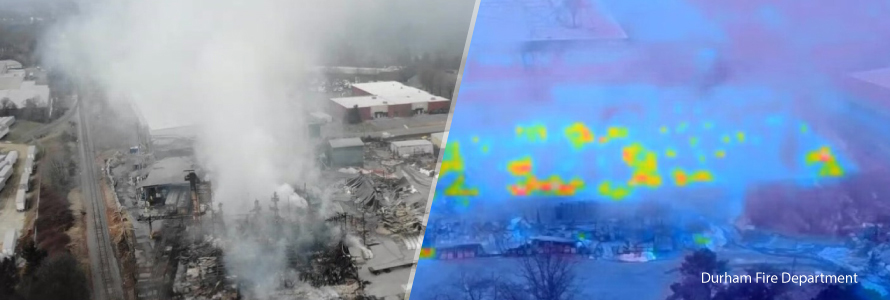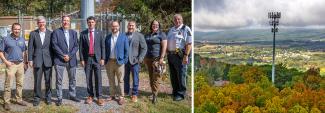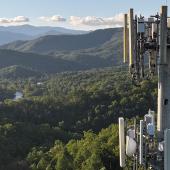Fire departments around the country are investing in drone technology to keep firefighters safe. Division Chief Dan Cremeans of the Durham Fire Department in North Carolina used the agency's drone program to support operations and protect his team during a fertilizer plant fire.
Keeping firefighters safe
Chief Cremeans manages the Durham Fire Department’s special operations division, which includes the technical rescue team, urban search and rescue team, domestic preparedness division, and the hazmat response team where the drone program resides. They’ve had a drone program for a year-and-a-half and have four to five drones.
When a fire broke out at a fertilizer plant in neighboring Winston-Salem, firefighters had to quickly retreat after the fire started because the plant contained hundreds of tons of highly flammable chemicals. Residents within a mile radius were evacuated.
Drones are especially helpful in these high-risk situations where humans can’t safely go.
The Durham Fire Department and other local agencies were called to the scene with their drones. “We were able to provide pretty much nonstop footage back to the command post,” said Chief Cremeans. “The technology enabled the command staff to keep firefighters and other responders a safe distance away from the product that had the potential for a catastrophic event.”
With the information learned from the drones, officials were able to plan how to safely extinguish the fire.
Drones aid non-fire situations
Chief Cremeans said that drones are helpful in non-fire situations too. He recalled search and rescue missions where drones can help pinpoint the area to concentrate resources.
“We've used drones on a number of person searches,” he said. “During those searches, the drone may not have actually located where they were, but it was able to rule out areas requiring detailed searches, so that reduces the number of personnel needed.”
The department has also flown drones for the sheriff's office bomb squad. “We were able to put the drone in the air and zoom in on the device, which prevented anyone from having to put on that real heavy blast suit and walk quite a distance just to take a look at the device,” said Chief Cremeans.
“All around, drones enable responder safety,” he said.
FirstNet for drones
Drone video is evolving from the white noise of a 24/7 data deluge to targeted footage that gives decision-makers crucial information to use at the right moment. With advancements in technology, drone use will become even more prevalent in the fire service to keep firefighters safe and to increase situational awareness.
FirstNet is designed for the unique situations facing public safety, and it’s especially helpful when connecting drones. One example is trying to livestream drone video in crowded areas where congestion typically might disrupt the feed. With FirstNet, the drone’s video gets priority and preemption on the network.
Drones also benefit from 5G, the next generation in wireless technology. 5G provides peak data speeds, higher throughput capability, and improved latency for drone operations.
In April 2021, the FirstNet Authority Board directed investments to upgrade the FirstNet Core to enable 5G for FirstNet. Subscribers now have access to 5G spectrum in a growing number of cities and towns across the country.
Invest in the future
Fire departments can incrementally invest in technology as it makes sense for their organizations, especially to fill gaps affecting firefighter safety. At the Durham Fire Department, Chief Cremeans is looking at next steps for their drone program. “We want to solidify our training program, expand our pilot pool, and increase our fleet of aircraft,” he said.
The department recently added a drone with air monitoring capability. Next, they’d like to add an aircraft with payload capability. “If we have a rescue situation, we can fly a personal flotation device to somebody who is on the water and get there faster than our boat,” he said.
"Technology like drones, and robots and so on ... they're not cheap, but they cost a lot less than a life,” he said.




















